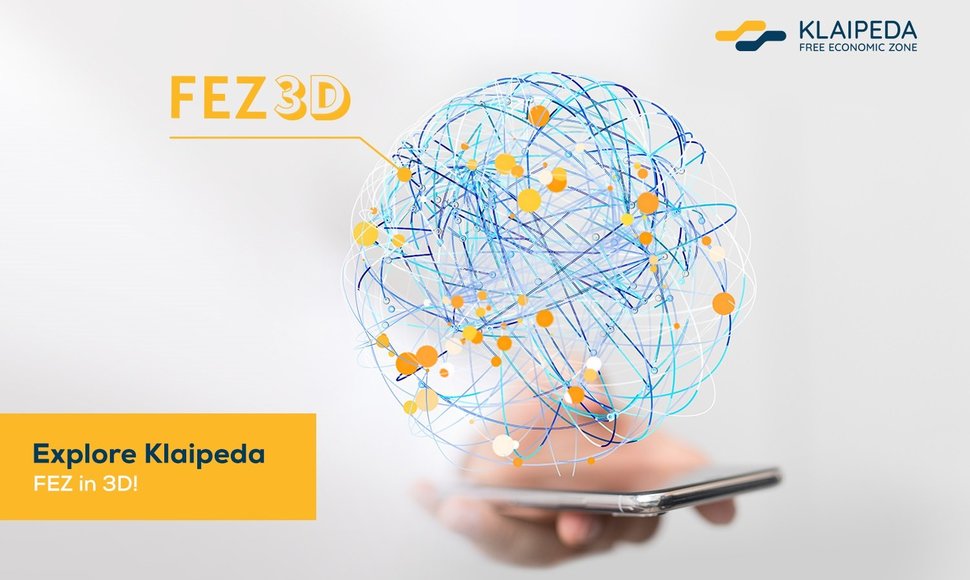Accessed via the FEZ website, the 3D model allows for a virtual trip around the territory. Users will have an opportunity to analyse the layout of the buildings, plots and other objects within the site. Locating specific companies, observing various underground structures and measuring distances will also be made easier with the help of the new model.
The 3D model of the Zone will become a useful representational tool in promoting the FEZ and its potential to new investors. They will have an opportunity to assess the neighbourhood and the existing as well as planned infrastructure. The tool will also help to plan for future expansion – new objects can now be evaluated in terms of the overall look and the impact on the neighbourhood via the 3D model.
Eimantas Kiudulas, CEO of Klaipėda FEZ, explains that the new tool will strengthen the image of Klaipėda as an innovative and technologically-advanced location. The 3D model will also help to attract new investment in manufacturing and other traditional as well as innovative industries.
‘The 3D model is a small yet very important step in implementing our long-term vision – to become a technology-driven and innovative industry park which is built on scientific research, innovation and smart technologies, aiming to add the highest value possible. We will continue to expand the range of infrastructural, social and other processes for Klaipėda to become the most attractive location for the manufacturing industries, in addition to creating new products, services and technologies,’ says Kiudulas.
It is important to note that while the flight restrictions and self-isolation requirements are still partly in place due to the current pandemic, the 3D tool will be invaluable during the discussions with potential investors. According to the latest report by UNCTAD (United Nations Conference on Trade and Development), the flow of foreign direct investment globally is expected to decrease in 2020-21, with improvement forecast only from 2022. However, Lithuania is showing a much more positive trend in this area. According to Mantas Katinas, Managing Director of Invest Lithuania, as many as 10 investment projects are currently in the final phase of decision-making in Lithuania. During the last few months, the agency has also organised more than 10 virtual visits which resulted in some very positive feedback.
Arūnas Urbšys, Project Development Director at IN RE, the company tasked with developing the 3D model, says that Klaipėda is the first free economic zone in Lithuania, perhaps even within the neighbouring region, to have commissioned a tool like this.
‘The greatest advantage of this project is the fact that it allows users to explore the site of the FEZ virtually, to assess individual plots, neighbouring businesses, distances and connections. Many people find the 3D model more realistic and much easier to use than a conventional map. It will also serve the management company as a great tool for recording inventory – it will allow identification of areas which need particular attention and will facilitate the planning of infrastructure as well as receiving feedback from users of the tool. Last but not least, the 3D model will also be available on a high-resolution touch screen in one of the boardrooms of the FEZ management company, where members of staff will be able to discuss specific work being carried out within the Zone, to display to their visitors a bird’s-eye view of the entire territory and to discuss their requirements,’ says Mr Urbšys.
The 3D model was created by combining thousands of drone pictures with various other sources of information such as the plans for communication and utility networks, plot boundaries and others.
The representational 3D model of Klaipėda FEZ was created as part of the EU-funded project ‘Preparing the infrastructure of Klaipėda FEZ to attract foreign R&E companies’ (contract number S-Nr. 01.2.1-LVPA-V-830-02-0002). The design and implementation of the project was awarded to IN RE, a Lithuanian company specialising in engineering IT systems.












